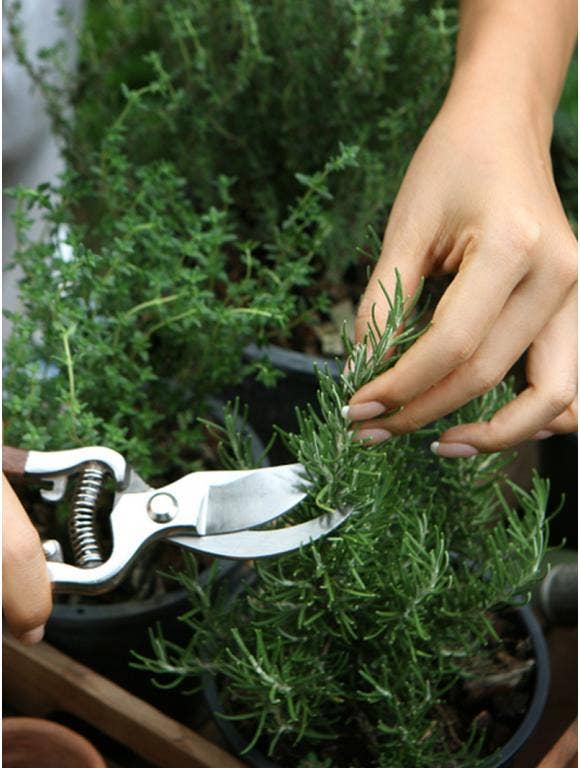


You won't find it in the dictionary, but another word for gardening could be sharing. Think about it: We sometimes share our tools with other gardeners and often our advice, too. And when there's a plant we really like — and think a friend might like as well — we also share plants. That's where propagating herbs can come in.
By their very nature, herbs are useful, so friends are bound to appreciate receiving them. They appeal to cooks as well as gardeners. Plus, many can be easily preserved for later use, so your gift will keep on giving.
Propagating Methods
Some herbs are vigorous growers, such as mint, and can easily be divided with the slice of a shovel. Others may need to be propagated in a different manner. The question is: What is the best process? Many are exceedingly easy to raise from seed — either directly in the garden or indoors in a seed-starting tray and later transplanted into the garden. Some herbs are more cooperative than others when it comes to seed starting. Annuals, for example, are generally easier to grow from seed than perennials, which are often purchased as plants or started by rooting stem cuttings.
Propagating Herbs From Seed
When propagating herbs from seed, fill a tray with moistened seed-starting mix and sow seeds according to the directions on the seed packet. Place the tray on a heating mat to warm the soil, and place plant lights within 6 inches of the tray to provide ample lighting. You can use a clear plastic dome to hasten germination, but you should remove it as soon as seeds sprout.
Propagating Herbs From Cuttings
Shrubby herbs can be started by rooting either softwood cuttings in late spring or semi-hardwood cuttings in summer. When propagating herbs from cuttings, cut 4- to 5-inch stems just below a leaf, and pinch off the leaves on the lower one-third of the stem. Dip in rooting hormone and place in a flat or other container filled with moist vermiculite, burying the stem up to the first set of remaining leaves. Place a clear plastic bag or dome over the cuttings to preserve moisture. Some herbs, like basil, can be rooted by simply placing softwood stems in a glass of water and allowing roots to form that way.
Propagating Herbs From Divisions
To divide sprawling herbs like mint, thyme or oregano, carefully dig up the plant and split it in two, salvaging chunks of the roots. Then, replant it and water it regularly until the roots are reestablished.
How to Propagate Herbs
When determining how to propagate herbs, match the method with the species. Bear in mind that some species can be propagated in more than one way. For example, rosemary can be propagated from a cutting and by division. Here are some examples of the best way to propagate herbs:
Direct sow outdoors:
Seed starting indoors:
From cuttings:
From divisions:
Planting Propagated Herbs
The length of time herbs need before being introduced to the garden depends on the species and the way they were propagated. Seed-grown herbs are ready sooner than those rooted from stem cuttings. Herbs that have been divided need no time at all before moving to their new home. And, of course, that applies to herbs that are direct seeded into the garden as well.
Seed-grown herbs are ready to be planted in the garden when they have several sets of true leaves, as opposed to the small cotyledons that form during germination. Rooted stem cuttings are ready to be transplanted when a gentle tug of the stem meets with resistance.
Before you transplant herbs into the garden, though, check the weather. You'll want to make sure you're past your area's average last frost date. Slowly acclimate the herbs to their new outdoor conditions, leaving them in a shady spot sheltered from the wind for a few days, then to a semi-shady spot for a couple of days and, finally, to full sun. Most herbs prefer full sun and well-drained soil, although there are exceptions, like mint, that are more forgiving of other conditions.
For information on how to grow herbs indoors, check out Burpee's guide to growing herbs.



